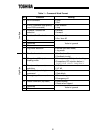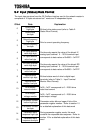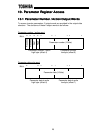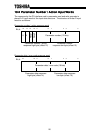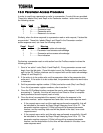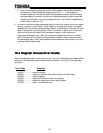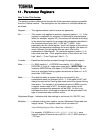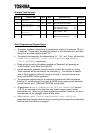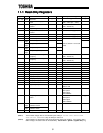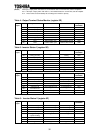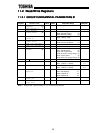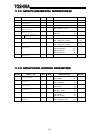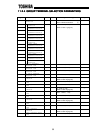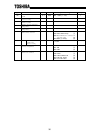
29
11.
11.11.
11.
Parameter Registers
Parameter RegistersParameter Registers
Parameter Registers
How To Use This Section:
This section contains tables which describe all of the parameter registers accessible
from the Profibus network. The descriptions for the columns in the listed tables are
as follows:
Register ............The register number used to access the parameter.
Bit .....................This column only applies to read-only registers (section 11.1). If the
register is comprised of a collection of individual bit-oriented status
items (for example, register 0D), this column will indicate which bit(s)
in the word-sized register the corresponding parameter described in
the Function column uses (bit 0 = LSB, bit F = MSB). If the
parameter uses the whole register, "word" will appear in this column,
indicating the parameter consumes the entire register (this does not
mean, however, that all register bits are used: refer to the
explanation for Mask below). All read/write registers (section 11.2)
have word-size data. Other possible values in this column are "low
byte" (bits 0 ∼ 7) and "high byte" (bits 8 ∼ F).
Function............Describes the function accessed through this parameter register.
Bank .................0 = RAM (volatile), 1 = EEPROM (nonvolatile), 0/1 = RAM &
EEPROM, 2, 3 and 6 = code space (read-only). IMPORTANT: the
inverter’s EEPROM has a life span of 10,000 write cycles. Do not
write to a read/write holding register whose bank is listed as 1 or 0/1
more than 10,000 times.
Mask.................The data bits within a register that are not covered by the
hexadecimal mask (for example, bits 8 ∼ F if the mask is 00FF) will
always be returned as 0 during data reads and will be ignored during
data writes. For example, if a hexadecimal value of AB98 is sent to
a register whose mask is 00FF, the actual value written to the
register's corresponding parameter will be 0098. As this is not
considered an error, no exception response will be generated if this
type of extraneous data condition occurs.
Adjustment Range ...Indicates valid data settings in real terms (Hz, ON/OFF, etc.)
Multiplier ...........Indicates scaling factor used to convert Adjustment Range data into
integer values. The equation used for this conversion is:
Actual Holding Register Data = Real Data ÷ Multiplier
For example, if 60.00Hz MAXIMUM OUTPUT FREQUENCY were
desired, register 26 must be set to [60.00 ÷ 0.01] = 6000 decimal (=
1770 hex).



